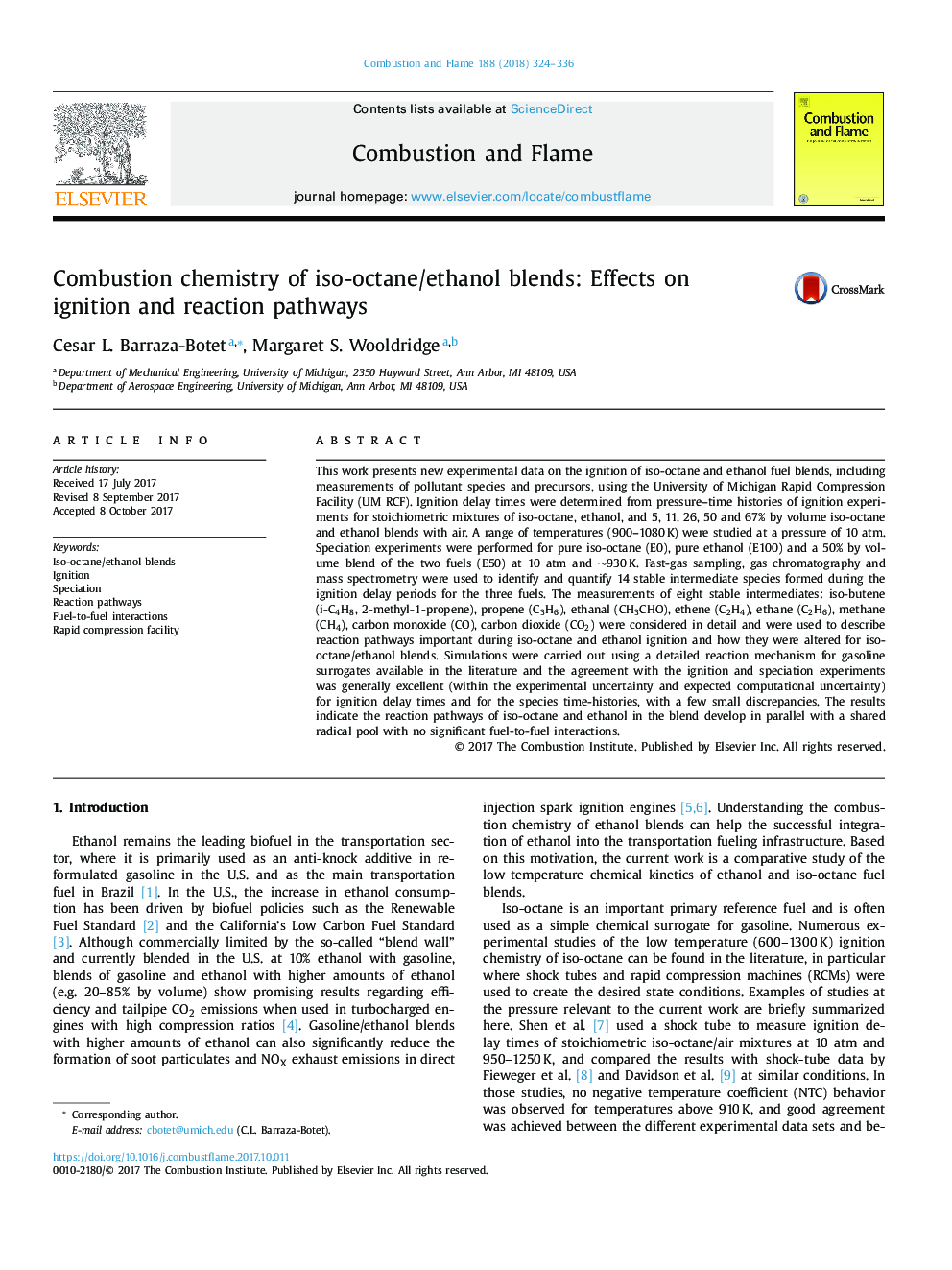| Article ID | Journal | Published Year | Pages | File Type |
|---|---|---|---|---|
| 6593963 | Combustion and Flame | 2018 | 13 Pages |
Abstract
This work presents new experimental data on the ignition of iso-octane and ethanol fuel blends, including measurements of pollutant species and precursors, using the University of Michigan Rapid Compression Facility (UM RCF). Ignition delay times were determined from pressure-time histories of ignition experiments for stoichiometric mixtures of iso-octane, ethanol, and 5, 11, 26, 50 and 67% by volume iso-octane and ethanol blends with air. A range of temperatures (900-1080â¯K) were studied at a pressure of 10 atm. Speciation experiments were performed for pure iso-octane (E0), pure ethanol (E100) and a 50% by volume blend of the two fuels (E50) at 10 atm and â¼930â¯K. Fast-gas sampling, gas chromatography and mass spectrometry were used to identify and quantify 14 stable intermediate species formed during the ignition delay periods for the three fuels. The measurements of eight stable intermediates: iso-butene (i-C4H8, 2-methyl-1-propene), propene (C3H6), ethanal (CH3CHO), ethene (C2H4), ethane (C2H6), methane (CH4), carbon monoxide (CO), carbon dioxide (CO2) were considered in detail and were used to describe reaction pathways important during iso-octane and ethanol ignition and how they were altered for iso-octane/ethanol blends. Simulations were carried out using a detailed reaction mechanism for gasoline surrogates available in the literature and the agreement with the ignition and speciation experiments was generally excellent (within the experimental uncertainty and expected computational uncertainty) for ignition delay times and for the species time-histories, with a few small discrepancies. The results indicate the reaction pathways of iso-octane and ethanol in the blend develop in parallel with a shared radical pool with no significant fuel-to-fuel interactions.
Related Topics
Physical Sciences and Engineering
Chemical Engineering
Chemical Engineering (General)
Authors
Cesar L. Barraza-Botet, Margaret S. Wooldridge,
